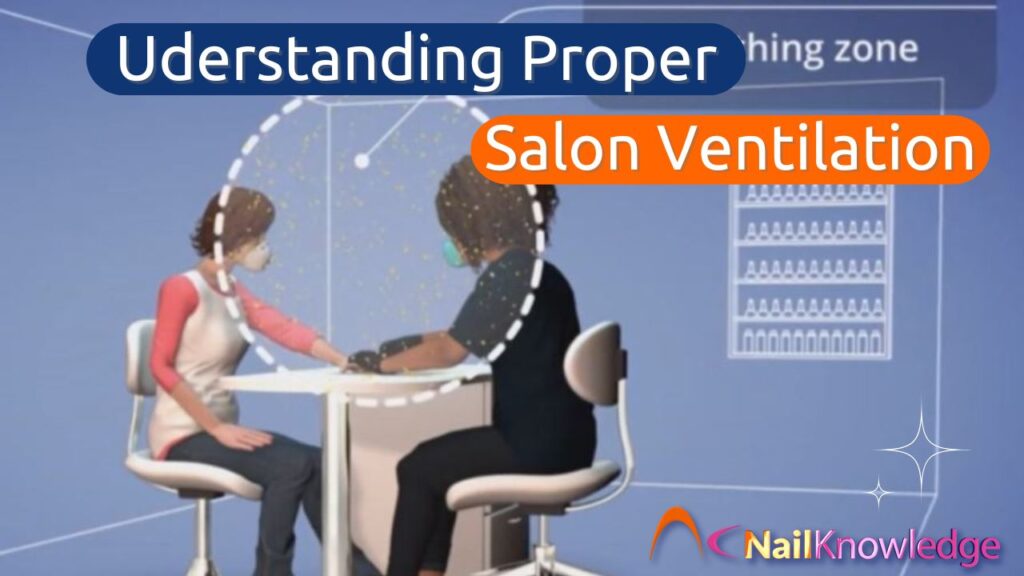If you’re running a salon or working in one, your top priority should be the health and comfort of both clients and professionals. One of the most overlooked, but absolutely critical, elements of salon safety is proper ventilation. Understanding proper ventilation in nail salons means knowing not just that you need fresh air, but how to achieve it effectively, consistently, and professionally. It’s not simply about opening a window, it’s about installing the right systems, using them correctly, and ensuring they’re suited to the demands of a busy salon environment.
What Does Proper Ventilation in Nail Salons Really Mean?
Proper ventilation goes far beyond just opening a window or plugging in an air purifier. It means having professionally installed and specifically designed equipment that ensures a consistent supply of high-quality air. This system must be:
- Effective for your specific salon setup and services.
- Always turned on during business hours.
- Well maintained year-round.
The gold standard? A professional-grade source capture ventilation system designed specifically for nail salons.
Why Home Air Cleaners Just Don’t Cut It
Avoid using home air purifiers in a professional setting. They might make the air smell fresher, but they won’t adequately remove dangerous vapours or fine dust. Worse yet, they give a false sense of security. Professional salons require ventilation tailored to the tasks performed, and that includes handling multiple clients and technicians working at once.
Signs Your Ventilation in Nail Salons Isn’t Working Properly
Ask yourself or your staff these questions:
- Do strong product odours linger more than 10 minutes after use?
- Can you smell products from other rooms?
- Is there a noticeable odour when opening the salon in the morning?
- Do clients comment or complain about strong smells?
- Do you have to open windows or doors to clear the air?
- Are there signs of excess moisture—like foggy windows or sweating walls?
- Is there a fine layer of dust on surfaces despite regular cleaning?
If you said “yes” to even one, it’s time to get help. Contact a local HVAC (Heating, Ventilation, and Air Conditioning) expert to inspect and maintain your system. These professionals can also advise on reducing dust, allergens, and vapours, improving both air quality and health outcomes in your salon.
Recognising the Symptoms of Poor Air Quality
Salon workers experiencing frequent:
- Headaches
- Sore throats
- Coughing or nausea
- Watery or burning eyes
- Blurry vision
…might be reacting to poor ventilation. These are signs of “sensory irritation” and shouldn’t be ignored.
Don’t Confuse Odours with Danger
Here’s a myth to bust: Odour = danger. That’s not always true. Smelly items like dirty socks or nappies aren’t necessarily harmful. On the other hand, some fragrances, which smell great, can trigger allergies.
So what’s the point? Ventilation shouldn’t be used to eliminate odours, it should control vapours and dust. Don’t be misled by products that promise to “neutralise” smells. Odour is actually your warning sign that the air quality isn’t good enough.
What About “Fumes”?
This is another common misconception. In salons, we’re not dealing with “fumes” (which come from burning, like smoke). Nail products give off vapours when they evaporate, completely different from fumes. So you’re not removing fumes; you’re managing vapours and dusts.
Practical Tips to Improve Ventilation in Nail Salons and Reduce Dust
- Empty bins regularly – Use metal bins with self-closing lids to contain vapours.
- Avoid using fans – They just blow dust and vapours around the room.
- Use nail oils when filing – Especially with electric files, specially formulated nail oils help capture dust before it becomes airborne.
- Maintain your ventilation system – Regular servicing ensures optimal performance.
Focus on the Breathing Zone
The most important airspace to protect is the breathing zone, a sphere about two feet in front of your face. This is where you’re inhaling directly, so it’s vital to keep this area as clean as possible.
Source capture systems, which sit at or near the nail table, are ideal for this. When combined with general building ventilation, they create a highly effective air quality system.
Should You Wear a Mask?
Yes—if it’s the right kind
Training Staff on Effective Ventilation in Nail Salons
Even with the right equipment, salon air quality can only be maintained if everyone in the salon understands how Và Tại sao to use it correctly. Salon owners should create a clear ventilation policy and ensure all staff are properly trained. This includes:
- Turning on all ventilation systems at the start of the working day and keeping them on until closing time.
- Performing regular filter checks and replacements on all equipment, especially source capture units.
- Ensuring workstation cleanliness, including daily wiping of surfaces to remove dust buildup.
- Proper disposal of used materials such as nail wipes, cotton pads, and disposable files in self-closing metal bins.
Training should be reviewed periodically, ideally every six months, to refresh best practices and introduce any updates to equipment or procedures. A simple checklist by each nail station can act as a daily reminder of the steps needed to maintain good air quality.
The Role of Product Choice in Minimising Vapour and Dust Exposure
Product selection can significantly impact air quality in the salon. Lower-odour options, like odourless acrylic systems or hard gels with low vapour output, can help reduce the airborne chemical load. While no product is entirely vapour-free, some are designed to be less volatile, meaning they release fewer vapours into the air during use.
Additionally, avoid excessive use of alcohol-based cleansers, acetone, and primers when they’re not absolutely necessary. Always keep containers sealed tightly when not in use, and use pump dispensers rather than open dishes to limit surface evaporation.
Product education is vital. Nail professionals should understand the chemical behaviour of the products they use so they can adjust their handling methods accordingly. Remember: just because a product doesn’t smell strong doesn’t mean it’s safe to breathe in excess amounts of its vapours.
Ventilation is a Health Investment, Not a Cosmetic Upgrade
It’s easy to think of ventilation systems as optional extras, especially in smaller or home-based salons, but they are essential to the long-term health of everyone in the salon. Inadequate ventilation can lead to:
- Chronic respiratory issues
- Sensory irritation (burning eyes, dry throat, etc.)
- Long-term chemical sensitivities
- Workplace dissatisfaction and discomfort
- Reduced client retention due to unpleasant odours
Think of a good ventilation system like PPE, it’s an investment in your business and your team’s wellbeing. Many insurance providers and regulatory bodies are also beginning to expect evidence of proper air handling systems in place, particularly in environments where chemicals are used frequently.
Summary: A Layered Approach for Safer Air
Improving air quality in salons isn’t about relying on a single piece of equipment or shortcut fix. It requires a layered approach, where each strategy supports the other to ensure a clean, comfortable, and healthy environment. That includes:
- Source Capture Ventilation – to extract vapours and dust at the table.
- General Salon Ventilation – to replace stale air with clean, filtered air.
- Routine Cleaning and Disposal Practices – to keep dust and vapour sources to a minimum.
- Dust Masks (N95-rated) – for added technician protection, never as a substitute.
- Education and Training – to ensure consistency and proper equipment use.
- Smart Product Handling – to minimise unnecessary chemical exposure.
The air you breathe while you work matters. Nail professionals are highly skilled individuals working with complex chemistry on a daily basis, your environment should reflect that level of professionalism. By taking the right steps now, you protect your team, your clients, and the reputation of your salon long into the future.


